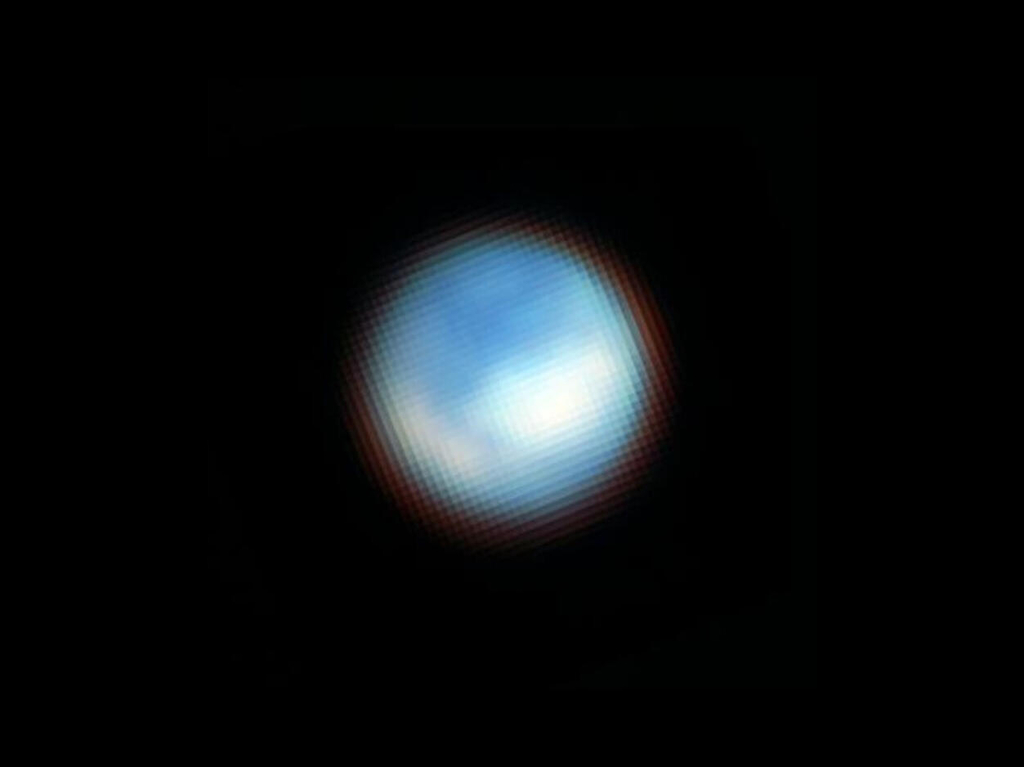carbon dioxide found on Europa might originate from subsurface ocean

A team have detected carbon dioxide on Europas surface, which may provide insight into the potential habitability of the icy moon. The two new papers published on the 21st of September detail the findings of carbon concentrated in a geologically young area, which is consistent with an endogenous scenario in which the substance originated from within Europa, possibly from its sub-surface liquid ocean.
Europa is one of Jupiter’s largest moons, being one of the few bodies in our solar system capable of possessing the conditions suitable to harbour life. The idea of a hidden sub-surface liquid ocean on the moon has been a topic of conversation since the 1970s, when data from the Voyager spacecraft showed the moon was not only icy but has a young outer surface. The existence of this ocean is believed to be due to tidal heating in the moons interior, resulting from orbital dynamics between Europa and the other large Jovian moons. However, scientists have not determined if the ocean contains carbon, a chemical crucial for life on Earth.

Science Credit: Geronimo Villanueva (NASA/GSFC), Samantha Trumbo (Cornell Univ.), NASA, ESA, CSA. Image Processing Credit: Geronimo Villanueva (NASA/GSFC), Alyssa Pagan (STScI)
The team, led by Geronimo Villanueva of NASA’s Goddard Space Flight Center in Greenbelt, Maryland and Samantha Trumbo of Cornell University in Ithaca, New York used JWST data from the NIRSpec instrument. This instrument supplies spectra with a resolution of 200 x 200 miles on Europa’s surface, providing astronomers with the opportunity to determine where the carbon dioxide is located. The group of astronomers found that carbon dioxide is most abundant in the Tara Regio region, a ‘chaos terrain’ which is geologically young and has been resurfaced.

Science Credit: Geronimo Villanueva (NASA/GSFC), Samantha Trumbo (Cornell Univ.), NASA, ESA, CSA. Image Processing Credit: Geronimo Villanueva (NASA/GSFC), Alyssa Pagan (STScI)
According to the studies, it is believed the carbon originates from within Europa, more specifically, within its sub-surface ocean. “Previous observations from the Hubble Space Telescope show evidence for ocean-derived salt in Tara Regio,” explained Trumbo. “Now we’re seeing that carbon dioxide is heavily concentrated there as well. We think this implies that the carbon probably has its ultimate origin in the internal ocean.” This is supported by the fact that carbon was found concentrated in one geologically young region.
Villaneuve states the CO2 was not simple, but complex, and this type is more likely to be present in places potentially friendly to life. “On Earth, life likes chemical diversity. The more diversity, the better. We’re carbon-based life. Understanding the chemistry of Europa’s ocean will help us determine whether it’s hostile to life as we know it, or if it might be a good place for life.” He explains.
“[The carbon dioxide] was localized in one area. One of the big questions when you find CO2 is where it’s coming from. If it’s coming from micrometeorites or things from outside the moon, you tend to think everywhere will be more or less the same, but in this case it was localized in a specific area. This [area] is known to be very geologically new chaos terrain, which is very interesting because it indicates something is happening there.” Villaneuve continues.
However, it is still possible that the formation of the carbon molecule happened due to carbonates or other organics. The first of the set of papers discussed the potential source of carbon dioxide being carbonate-bearing fluids. Saturns moon Enceladus has a carbonate-rich ocean that degases carbon dioxide, and some of that carbon dioxide freezes on the surface. Another origin for the substance is organic compounds which were dissolved or suspended in a subsurface liquid water reservoir, and were later converted to carbon dioxide. Additionally, carbon dioxide could be produced by irradiation on the surface.
Moreover, an exogenous scenario can be considered, where the source of carbon dioxide is supplied externally, such as from meteorites. However, this is not likely to be the case since this situation would produce a more global distribution of the molecule, rather than a local concentration associated with salts.
Arguably, the more important question to be answered is if the process which produced the carbon dioxide is biological. Unfortunately, following the analysis of isotopic ratio, it could not be definitively determined whether the carbon dioxide was associated with life. This question may be answered soon by the Europa Clipper spacecraft, planned for launch in October 2024. The NASA mission will see several flybys of Europa in a bid to investigate if the conditions on the icy moon are fit for bearing life.
“Making these initial measurements allows people to come up with even better ideas to use the instruments to go deeper, to maximize the science return,” says Villanueva. “And the good thing about it is that this is open to the community. Anybody can go and apply to use the telescope if they have a good pitch.” Science at Europa, and with JWST in general, may only just be getting started.
The papers, published in science can be read here and here.
--
Cover image: NASA/ JPL-Caltech/ SETI Institute.
